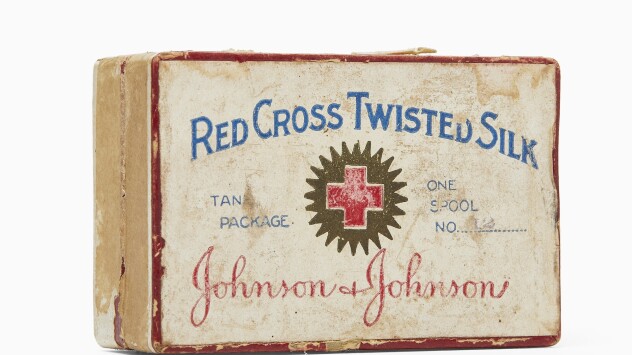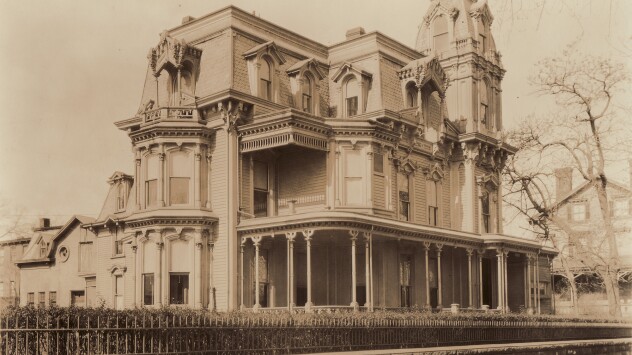- Home
- Our company
- Our history
- Our stories
Our stories
Discover the company’s long legacy of advancing human health.
The inside story of the Powerhouse
Johnson & Johnson has always used cutting-edge technology to move medicine forward. This was true even in the early 1900s, when a new brick building began supplying electrical power to company facilities. Here’s a short history of this still-in-use part of the New Brunswick campus.
The launch of the women-only Laurel Club
Learn how the Johnson & Johnson club started and why it’s such an important part of the company’s legacy of supporting female workers.
From company president to national business leader: the story of Robert Wood Johnson II
The son of company founder Robert Wood Johnson rose through the ranks to lead Johnson & Johnson through the transformative decades of the Depression and World War II, cementing the organization’s legacy as an innovative healthcare company that puts people first.
A fateful train ride through a New Jersey city leads to the founding of Johnson & Johnson in 1886
James Wood Johnson, one of three brothers who launched the company, spotted a “for rent” sign on an empty factory building while traveling from New York to Philadelphia. Here’s how in less than a year, it became Johnson & Johnson’s first location.
All stories
The legacy of Dr. Paul Janssen: How a “funny idea” helped change the course of modern medicine
When the Belgian physician created his research lab in the 1950s, he did it largely on his own. But it didn’t take long for the medical community to realize the then 26-year-old was on to something profound. Over the course of his long and esteemed career, Dr. Paul, as he was known, coined more than 100 patents and developed dozens of life-changing medications.
A day in modern industry: The Johnson & Johnson program that gave high school kids a peek into the working world
Before there was Take a Child to Work Day, this trailblazing program gave thousands of students the chance to shadow people across the company.
A sign of the times: the story behind Johnson & Johnson’s iconic logo
There’s a reason the company logo is so recognizable—it’s been around for 130 years. We trace its history, starting with the day it first appeared on a company check signed by its founder.
Aerokit: The Johnson & Johnson innovation that aided early aviators
In honor of National Aviation History Month, we’re looking at the launch of the Aerokit, a first aid kit for pioneering pilots.
From our archives
Learn about our iconic, pioneering products and advertisements

Red Cross twisted silk sutures, tank package
A packaging innovation, the tank suture package consisted of a glass container with three individual glass spools of sterile sutures inside, with each spool of sutures designed to be drawn out through a rubber stopper. Each glass tank container was packed in an individual outer box like the one shown here.

Johnson & Johnson wooden shipping crate
Early in Johnson & Johnson history, the company’s products were shipped worldwide in sturdy wooden shipping crates with hand stenciled lettering. This 1916 Johnson & Johnson shipping crate was repurposed as a storage chest, thus preserving a rare type of artifact, since wooden shipping crates were frequently broken up and used as kindling once they had reached their destination.

Fred Kilmer’s analytical balance, 1889-1932
This 19th century analytical balance belonged to Fred Kilmer, Johnson & Johnson’s scientific director from 1889 to 1932. Kilmer, a pharmacist and pharmaceutical chemist, used this balance in the company’s laboratories during the course of his career. The drawer at the front held weights used to measure the mass of small samples with great precision, and the glass enclosure ensured that air currents would not interfere with the measuring process.

Robert Wood Johnson’s home
Along with his second wife, Evangeline, and his children, Robert Wood Johnson lived in a stunning Victorian mansion in New Brunswick called Gray Terrace. The house included a large library, greenhouses, and gardens. Its close proximity to Johnson & Johnson ensured Johnson could walk to work each day. The house was later sold to Rutgers University and was home to a fraternity. Though once a city landmark, the mansion fell into disrepair and was eventually torn down.
Our heritage
Discover Johnson & Johnson’s long legacy of pioneering human health.
Company timeline
Through our timeline, discover the company’s pioneering role in the field of healthcare.
From the archives
Learn about our iconic and pioneering products, and see some of our advertisments through the years.








